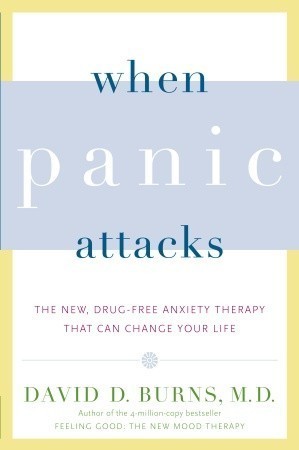What do you think?
Rate this book


464 pages, Kindle Edition
First published April 12, 2004

"There are many theories about the causes of anxiety, but we’ll focus on four of them:
The Cognitive Model is based on the idea that negative thoughts cause anxiety. “Cognition” is simply a fancy word for a thought. Every time you feel anxious or afraid, it’s because you’re telling yourself that something terrible is about to happen. For example, if you have a fear of flying and the plane runs into turbulence, you may panic because you think, “This plane is about to crash!” Then you imagine passengers screaming as the plane crashes toward the earth in a ball of
flames. Your fear does not result from the turbulence but from the negative messages you give yourself. When you change the way you think, you can change the way you feel.
The Exposure Model is based on the idea that avoidance is the cause of all anxiety. In other words, you feel anxious because you’re avoiding the thing you fear. If you’re afraid of heights, you probably avoid ladders, high mountain trails, or glass elevators. If you feel shy, you probably avoid people. According to this theory, the moment you stop running and confront the monster you fear the most, you’ll defeat your fears. It’s like telling a bully “Take your best shot. I’m not running away from you any longer!”
The Hidden Emotion Model is based on the idea that niceness is the cause of all anxiety. People who are prone to anxiety are nearly always people-pleasers who fear conict and negative feelings like anger. When you feel upset, you sweep your problems under the rug because you don’t want to upset anyone. You do this so quickly and automatically that you’re not even aware you’re doing it. Then your negative feelings resurface in disguised form, as anxiety, worries, fears, or
feelings of panic. When you expose the hidden feelings and solve the problem that’s bugging you, often your anxiety will disappear.
The Biological Model is based on the idea that anxiety and depression result from a chemical imbalance in the brain and that you’ll have to take a pill to correct it. Two types of medications are generally recommended: the minor tranquilizers, such as Xanax, Ativan, and Valium, and the antidepressants, such as Prozac, Paxil, and Zoloft. Your doctor may tell you that these medications represent the only truly effective treatment for depression and anxiety and that you’ll need to keep taking them for the rest of your life, in much the same way that individuals suffering from diabetes will have to take insulin shots forever to regulate their blood sugar."


